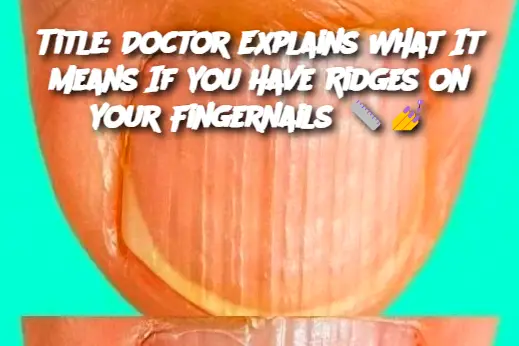- What They Look Like: These are the most common type of ridges and run from the tip of the nail to the base. They often appear as shallow lines running lengthwise along the nail.
- Potential Causes:
- Aging: As we age, the production of natural oils in the nail decreases, leading to the development of vertical ridges.
- Nutrient Deficiencies: Deficiencies in vitamins and minerals like biotin, zinc, and iron can lead to changes in nail texture, including the appearance of vertical ridges.
- Dehydration: Lack of proper hydration can lead to dry nails, contributing to vertical ridges.
- Underlying Health Conditions: Sometimes, vertical ridges may indicate certain health issues, such as rheumatoid arthritis, diabetes, or thyroid problems. If vertical ridges appear suddenly or are accompanied by other symptoms, it’s important to consult with a healthcare provider.
Horizontal Ridges (Beau’s Lines):
- What They Look Like: These are horizontal lines that run across the nail from side to side and can vary in depth. They often create indentations or grooves in the nail surface.
- Potential Causes:
- Trauma or Injury: Physical damage to the nail matrix can cause temporary horizontal ridges. This could be from hitting the nail or using it for tasks that cause pressure.
- Severe Illness or Infection: Horizontal ridges are often associated with serious illnesses or infections, such as high fever, pneumonia, or heart attacks, because the body temporarily halts nail growth during the healing process.
- Chemotherapy: Patients undergoing chemotherapy often experience Beau’s lines due to the disruption of the body’s normal processes during treatment.
- Nutrient Deficiency: Like vertical ridges, horizontal ridges can also result from a lack of key nutrients like zinc or biotin.
What the Presence of Ridges Could Mean for Your Health:
-
Nutrient Deficiencies:
continued on next page
